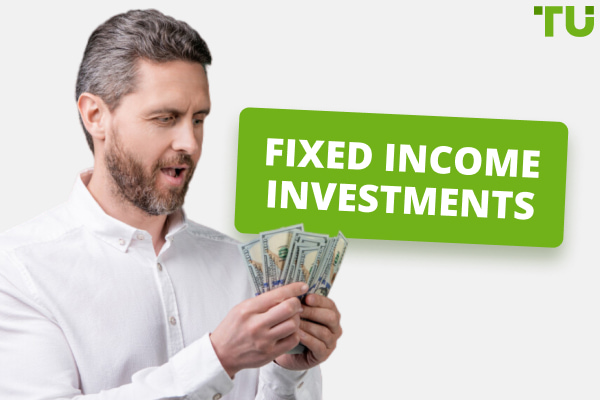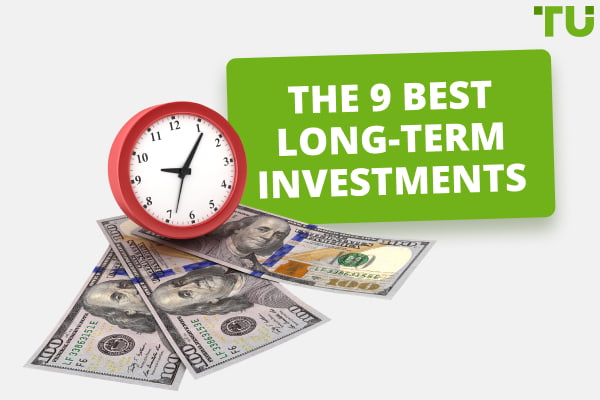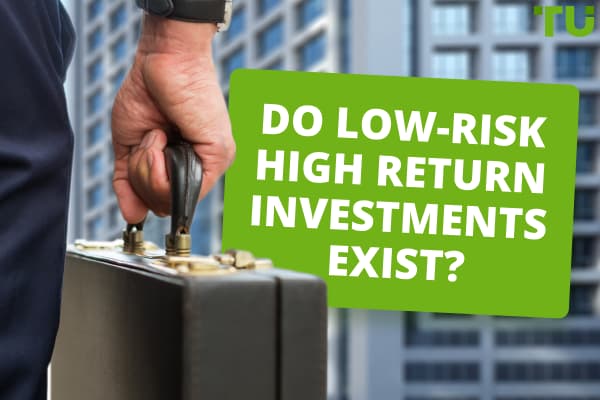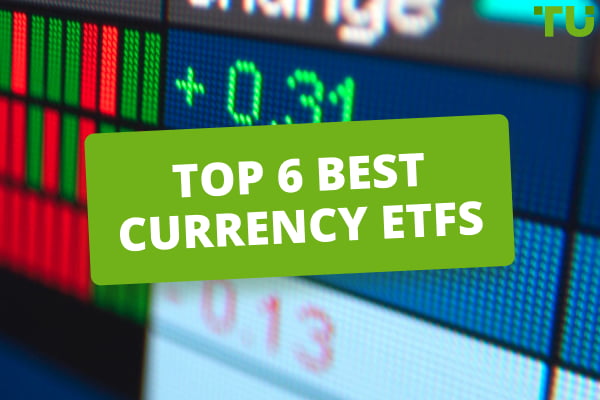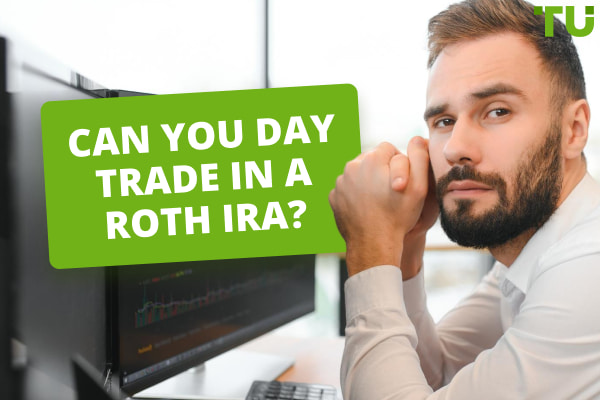Best Silver ETFs To Buy Now

Over 50k supported assets, advanced trading platform
Best Silver ETFs To Buy In 2024:
-
iShares Silver Trust (SLV) - expense ratio of about 0.50% per year
-
Global X Silver Miners ETF (SIL) - expense ratio of approximately 0.65% per year
-
ETFMG Prime Junior Silver Miners (SILJ) - expense ratio of approximately 0.69%
-
The abrdn Physical Silver Shares ETF (SIVR) - expense ratio of approximately 0.30%
-
ProShares UltraShort Silver (ZSL) - expense ratio is about 0.95%
Silver ETFs (Exchange-Traded Funds) are funds that invest in silver and are traded on an exchange. They are a convenient way for investors to access silver and silver prices without having to physically store the metal. Traders Union experts explain how silver ETFs work, their main advantages and disadvantages, and provide a step-by-step
-
How does a silver ETF work?
Silver ETFs function by buying and storing physical silver that supports its price. It's a fairly simple process: investors purchase shares in a fund, which in turn buys and stores silver in specific vaults. The price of a silver ETF typically reflects the price of silver itself on the market. Silver ETFs tend to be highly liquid.
-
What are some of the advantages of investing in a silver ETF?
Investing in silver ETFs provides investors with the opportunity to participate in silver price movements without having to directly purchase and hold the physical metal. Investing in silver is also useful for portfolio diversification, as silver has its own price dynamics that are different from other assets such as stocks or bonds.
-
Are there any risks associated with investing in a silver ETF?
As with any investment product, there are certain risks involved in investing in silver ETFs. For example, the price of silver may be affected by factors such as economic instability, changes in the jewelry industry and industrial demand. Also worth considering are the transaction costs and commissions associated with servicing ETFs.
-
Is Silver ETF better than gold ETF?
Whether a silver ETF or a gold ETF is better depends on the goals of the individual investor. Both metals have their unique characteristics and roles in an investment portfolio. Silver tends to be more volatile and has more industrial applications, while gold is often seen as a stable safe haven during downturns in the macro economy.
Top 8 silver ETFs to invest in
Traders Union specialists have selected the best silver ETFs to invest in.
iShares Silver Trust (SLV)
The fund was launched on April 21, 2006 and has since become one of the most popular investment vehicles. SLV invests in physical silver stored in vaults. The fund has an expense ratio of about 0.50% per year, which means that for every $100 invested in the fund, the investor must pay approximately $0.50 per year in commissions and other expenses. That's a very low rate for the industry. The iShares Silver Trust does not pay dividends because its primary asset is physical silver, and the fund's income depends on changes in the price of silver on the market.
Global X Silver Miners ETF (SIL)
The fund was established on April 19, 2010. It provides investors with the opportunity to gain exposure to silver mining operations around the world. SIL invests in the equities of companies that focus on the exploration and development of silver ore deposits. SIL includes holdings of large and mid-sized corporations in the global silver mining market as well as some smaller players in the industry that focus on regional markets. The SIL fund has an expense ratio of approximately 0.65% per year. Important: The fund's portfolio includes stocks, not physical silver itself.
ETFMG Prime Junior Silver Miners (SILJ)
The exchange-traded fund, also called the Amplify Junior Silver Miners ETF, was founded in 2012 and is one of the most popular ETFs targeting small and mid-sized silver mining companies. It includes both companies that specialize exclusively in silver and those for which silver is one of several metals they mine. The ETF has a relatively low expense ratio of approximately 0.69%. Because SILJ focuses on companies in the small to mid-sized segment, it is more volatile and riskier than funds containing larger companies.
The abrdn Physical Silver Shares ETF (SIVR)
The Aberdeen Standard Physical Silver Shares ETF is another ETF designed to invest in silver. SIVR was launched on July 24, 2009. SIVR is a direct way to invest in silver stored in specially equipped vaults. It provides transparency and ease of asset ownership for investors who prefer to have direct physical cover for their investments. The abrdn Physical Silver Shares ETF has an expense ratio of approximately 0.30%, minimum. Since SIVR is focused on physical silver holdings, its dividend yield is zero.
ProShares UltraShort Silver (ZSL)
The fund was established in 2008. It is managed by ProShares, a firm specializing in the creation and management of funds focused on trading using short-term strategies and leveraged instruments. The fund's assets include derivatives, futures, options and other instruments. Overall, ProShares UltraShort Silver is designed for those investors who are interested in quick speculation in the silver market. It is a fund, as the name implies, with ultra-short-term positions aimed at achieving double the return from daily changes in the price of silver, meaning its performance is different from that of silver as a commodity.
GraniteShares Silver Trust (SIL)
The fund was established on April 15, 2017. SIL has an expense ratio of approximately 0.50%. The assets managed by GraniteShares Silver Trust include silver held in vaults. This means that the fund does not invest in stocks of silver-related companies, but instead owns the metal itself. This fund should not be confused with the Global X Silver Miners ETF, which has the same token label, SIL. They are two different unique tokens (it happens). GraniteShares SIL invests in physical silver, while Global X SIL focuses on silver mining companies.
ProShares Ultra Silver (AGQ)
ProShares Ultra Silver is a progressive ETF that focuses on twice the daily movement in the price of silver rather than simply physically owning the metal, so it doesn't have assets under management in the traditional sense. The fund uses financial derivatives, such as futures or options, and financial leverage to magnify the impact of silver price changes on its own price. If the price of silver increases by 1%, the price of the AGQ ETF increases by about 2% (at least that's how it is declared). The fund's inception date is December 20, 2008. AGQ's expense ratio is about 0.95%.
The Sprott Physical Silver Trust (PSLV)
A fund designed to invest in physical silver, launched in April 2010. The expense ratio for PSLV is typically around 0.45% per annum. PSLV has good trading volume on exchanges, which provides investors with liquidity when buying and selling shares in the fund. According to the latest data, the fund has more than $1 billion in assets under management. There is currently a surge in investment interest in PSLV for many reasons. The fund physically holds silver in vaults, allowing investors to avoid the complexities and costs associated with actually storing the metal.
Silver ETFs in comparison:
| Name | Inception Date | Expense Ratio | Annual Dividend Yield | Performance Over One Year | Assets Under Management |
|---|---|---|---|---|---|
|
iShares Silver Trust (SLV) |
2006 |
0.50 |
0.00 |
4.69% |
Physical silver |
|
Global X Silver Miners ETF (SIL) |
2010 |
0.65 |
0.54% |
2.15 % |
Stocks |
|
ETFMG Prime Junior Silver Miners (SILJ) |
2012 |
0.69 |
0.01% |
2.40% |
Stocks |
|
The abrdn Physical Silver Shares ETF (SIVR) |
2009 |
0.30 |
0.00 |
5.52% |
Physical silver |
|
ProShares UltraShort Silver (ZSL) |
2008 |
0.95 |
0.00 |
1.98% |
Futures, options, derivatives |
|
GraniteShares Silver Trust (SIL) |
2017 |
0.50 |
0.00 |
4.87% |
Physical silver |
|
ProShares Ultra Silver (AGQ) |
2008 |
0.95 |
0.00 |
4.67% |
Futures, options, derivatives |
|
The Sprott Physical Silver Trust (PSLV) |
2010 |
0.45 |
0.00 |
4.22% |
Physical silver |
Best brokers to buy silver ETF
TU's broker review will help you decide which silver ETFs to invest in.



What is a silver ETF?
An ETF, or Exchange-Traded Fund ("exchange-traded fund"), is an investment fund that is sold and bought on an exchange like regular stock. It pools assets from various investors and invests them in specific assets such as stocks, bonds or, in this case, silver. Unlike physically buying and storing the precious metal, silver ETFs allow investors to easily trade on the exchange and give them access to the silver market without having to physically buy and store it.
There are two main types of silver ETFs. The first is funds that are fully backed by physical silver. The fund manager buys real silver on the market. This is usually done through a trusted supplier, which can be a bank or a specialized vault for precious metals. Once the silver is purchased, it is stored in a vault, which may be in Switzerland, for example, or other countries with high security standards. This ensures that the physical assets of the fund are safe and protected.
Then such a fund issues ETF shares that represent ownership interests in that silver. The number of ETF shares is usually proportional to the amount of silver purchased by the fund. Silver ETF shares are traded on an exchange on behalf of investors. When investors buy or sell ETF shares, they exchange shares of silver held in the fund's portfolio. In this way, silver ETF assets are built through the purchase and storage of physical silver, which is then used to issue ETF shares available for trading on an exchange.
The second type are funds that invest in silver futures rather than holding the physical metal. The fund manager invests in silver futures according to the fund's investment strategy. In both cases, investors can purchase silver ETF shares on the exchange just like regular stocks. Most silver ETFs track a specific index of the price of silver or its futures, such as the price of silver on the London Metal Exchange (LME). Investors can sell their ETF shares on the exchange at any time at the current market price, providing high liquidity.
Are silver ETFs right for you?
Investing in silver ETFs can be a tempting choice for many investors, but as with any financial instrument, it has pros as well as cons. TU professionals review the main advantages and disadvantages of silver ETFs.
👍 Pros
• Diversification. Investing in silver ETFs is a good way to diversify your portfolio and protect it from market fluctuations by including precious metals.
• Liquidity. Silver ETFs typically have high liquidity, which means investors can easily buy and sell their shares on the exchange at the current market price without significantly affecting that price.
• Transparency. Most silver ETFs provide transparency about the composition of their portfolio, allowing investors to track exactly which silver assets are in the fund. Active portfolio management is typically practiced.
• Access without a physical purchase. Silver ETFs allow investors to gain exposure to changes in the price of silver without having to physically purchase and hold the metal. This is convenient and saves time and effort. Inflation protection. Silver is often seen as a good hedge against inflation. During periods of high inflation, the price of silver usually rises, helping to maintain purchasing power.
• Price stability. Unlike some other assets, the price of silver may be more stable or have a lower correlation to other assets such as stocks or bonds. This reduces the overall risk of the portfolio.
👎 Cons
• Transaction costs and commissions. Investing in silver ETFs may include certain transaction costs and commissions associated with trading on the exchange and managing the fund, which reduce the overall return on investment.
• Volatility. Silver can be quite volatile, causing the ETF's share price to fluctuate. This creates risk for investors who are not prepared for short-term market fluctuations.
• Market factors and risk. Investing in silver ETFs is sensitive to various market factors such as economic instability, inflation, changes in demand for industrial silver, etc.
• Currency risk. If the Silver ETF is traded in a currency other than the investor's currency, there is currency fluctuation risk that affects the overall return on the investment.
• Dependence on industrial demand. Because silver has a wide range of industrial uses, the price of the metal may be affected by changes in industrial demand. During periods of economic instability, this is an additional risk factor.
• Operational risks. Silver ETFs carry operational risks associated with managing the fund, storing silver and trading on the exchange. For example, improper storage of the metal or liquidity problems on the exchange reduce the ETF's share price.
Given all these factors, investors should carefully weigh the pros and cons of investing in silver ETFs and make an informed decision according to their goals, risk tolerance and time horizon.
How to buy a silver ETF?
TU experts present step-by-step instructions on how to purchase a silver ETF.
Step 1: Open an account with a broker
The first step is to open an account with a broker that provides access to ETF trading on an exchange. You should make sure that the broker you choose supports ETF trading and offers access to international exchanges where silver ETFs are traded.
Step 2: Research and Select Silver ETFs
You need to research and select a specific silver ETF, verifying that it has sufficient liquidity, low commissions, and matches the investor's risk level, goals and strategy
Step 3: Calculate the quantity of shares to purchase
Next, the investor needs to decide how many shares of the silver ETF he or she wants to purchase. This may depend on the available capital to invest, risk profile and intentions.
Step 4: Place a buy order
Log in to your broker account and find the ETF trading section. Then enter the silver ETF symbol (usually a ticker symbol, e.g. "SLV" for iShares Silver Trust) and specify the number of shares the investor plans to buy. Select the order type (market, limit, etc.) and submit the buy order.
Step 5: Confirm the purchase
Once the buy order has been sent, the trader will be provided with a confirmation of the transaction. It is imperative to make sure that all the details are correct and only then confirm the transaction.
Step 6: Wait for the order to be executed
Once the buy order has been confirmed, you need to wait for the trade to be executed. This usually takes place within a few seconds or minutes, especially if a market order is selected.
Step 7: Check the account
Once the order has been executed, it is worth checking the account with the broker to make sure that the silver ETF shares have appeared in the portfolio. The buyer now owns a share in a fund that invests in silver.
Expert Opinion
In the case of silver, it is particularly important to stay abreast of macroeconomic events, the geopolitical environment and changes in the financial markets, as these factors have a direct impact on the price of silver and silver ETFs. The state of industrial demand and investment interest plays a large role in shaping the prices of such metals. Tracking news, industry changes, and analyst reports should all become a daily ritual for the silver investor.
Conclusion
Silver ETFs are an effective investment tool that allows investors to access the price of silver without having to physically purchase and store the metal. When properly understood and utilized, silver ETFs can be a valuable asset for investors.
The pros of investing in silver ETFs include the ability to diversify a portfolio, liquidity, and access to the price of silver without physically buying and managing the fund. Possible risks of such an investment may include transaction costs, price volatility and dependence on industrial demand for silver.
Therefore, while investing in silver ETFs may be an attractive choice for many investors, it is important for each investor to do their own research, pay attention to their financial goals and risk tolerance before deciding to invest in this investment product.
Glossary for novice traders
-
1
Broker
A broker is a legal entity or individual that performs as an intermediary when making trades in the financial markets. Private investors cannot trade without a broker, since only brokers can execute trades on the exchanges.
-
2
Investor
An investor is an individual, who invests money in an asset with the expectation that its value would appreciate in the future. The asset can be anything, including a bond, debenture, mutual fund, equity, gold, silver, exchange-traded funds (ETFs), and real-estate property.
-
3
Trading
Trading involves the act of buying and selling financial assets like stocks, currencies, or commodities with the intention of profiting from market price fluctuations. Traders employ various strategies, analysis techniques, and risk management practices to make informed decisions and optimize their chances of success in the financial markets.
-
4
BaFin
BaFin is the Federal Financial Supervisory Authority of Germany. Along with the German Federal Bank and the Ministry of Finance, this government regulator ensures that licensees abide by eurozone laws.
-
5
Index
Index in trading is the measure of the performance of a group of stocks, which can include the assets and securities in it.
Team that worked on the article
Oleg Tkachenko is an economic analyst and risk manager having more than 14 years of experience in working with systemically important banks, investment companies, and analytical platforms. He has been a Traders Union analyst since 2018. His primary specialties are analysis and prediction of price tendencies in the Forex, stock, commodity, and cryptocurrency markets, as well as the development of trading strategies and individual risk management systems. He also analyzes nonstandard investing markets and studies trading psychology.
Dr. BJ Johnson is a PhD in English Language and an editor with over 15 years of experience. He earned his degree in English Language in the U.S and the UK. In 2020, Dr. Johnson joined the Traders Union team. Since then, he has created over 100 exclusive articles and edited over 300 articles of other authors.
Mirjan Hipolito is a journalist and news editor at Traders Union. She is an expert crypto writer with five years of experience in the financial markets. Her specialties are daily market news, price predictions, and Initial Coin Offerings (ICO).



